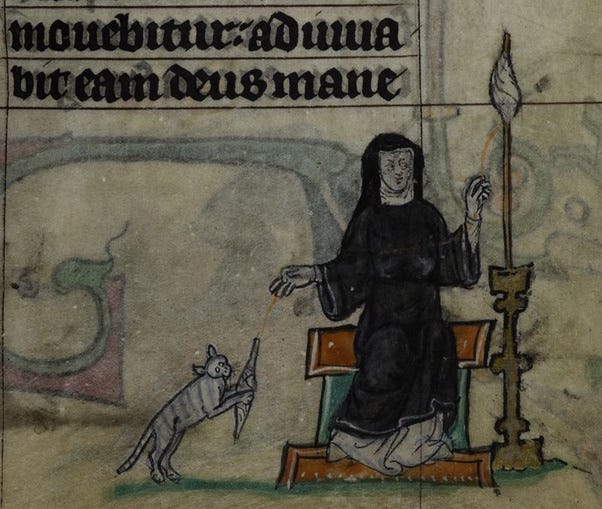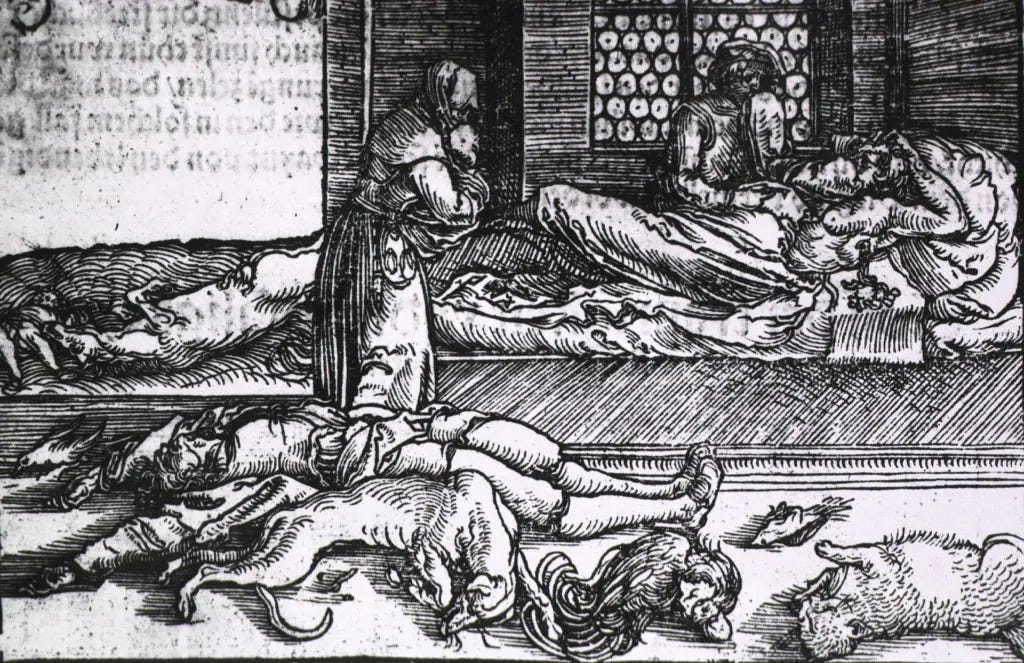A Whackadoodle History? Or an April Fools joke? Or Maybe a bit of both.
Were Cats Really Killed En Masse During the Middle Ages?
April Fools!
This part of my story was True:
For ten years, I ran an after school tutoring program at a local non-profit. It was a great place. We had a gym, a large swimming pool, a student garden, a field large enough for football practice, several buildings that had stood for a hundred years, and lots, and lots of feral cats.
The cats were adored by some, tolerated by others, and accepted by all as part of the family. Accepted that is until we got a new CEO who decided the cats had to go. She called the Humane Society and got them all carted off. Not for trap and release, just carted off. Pretty much a death sentence for feral cats. She was so proud of her accomplishment. I don’t think she every realized how angry her actions had made many of her employees.
Funny thing is, within two months, we were overrun by rats. The maintenance lady started trapping three or four a night.
(Except is was more like one or two rats every week.)
This part was also True:
Which brings me to Pope Gregory IX (1227-1241) and his decretal entitled Vox in Rama. For those of you who don’t know what a decretal is, it’s a fancy Latin word for decree. The official definition is “letters of a pope that formulate decisions in ecclesiastical law of the Catholic Church.”
The Vox in Rama was a decretal sent by Pope Gregory IX in June 1233 condemning the heresy of Luciferianism, or the worship of Lucifer, said to be rife in Germany, and authorizing the preaching of a crusade against it. (Pope Gregory’s decree did described in graphic detail a typical satanic rite. The quote I posted from the decree describing the rite was an accurate translation from the decree. You can read more about it in this excellent article.)
However, this part was not True (April Fools)
The long-term effect of this degree was to reshape the view of the cat in European society in general, morphing it from a pagan sacred animal into an agent of hell. As accusations of witchcraft began to spread amongst the ordinary people, often as a way of settling grudges or seizing property, cats began to be used as proof of satanic association. This demonization led to the widespread, violent persecution of cats in general, black cats in particular. By 1300, there were about as many cats in Europe, as were left at my old after school job.
In Truth: Although many people believe the above to be true, and you can find hundreds of Internet articles repeating the myth, there is little to no evidence that cats were ever killed en mass during the Middle Ages. In fact there is much evidence that they were appreciated as rat catchers and family pets. You can find their images in dozens if not hundreds of Medieval paintings, tapestries, and illuminated books. One of my favorites is this one of a nun spinning thread with the “help” of her playful cat:

I just threw in the Pied Piper story because I liked it; but even in the image of the Black Death that I posted, you can see a small cat who has fallen victim with the rest. (See below) Hardly proof that cats had been nearly exterminated in Europe.
This part is again True:
Although the exact origin of the The Black Death remains disputed, it is clear that by 1346 the bubonic plague was spreading along trade routes throughout the Mediterranean Basin and reaching North Africa, Western Asia, and the rest of Europe via Constantinople, Sicily, and the Italian Peninsula. It was most likely carried by fleas living on the black rats that travelled on Genoese ships.
It has been estimated that between the years 1346 and 1353, more than half the population of Europe died. Some historians place the estimate closer to three quarters of the population. To put it in perspective, imagine a dinner party with twelve people. Now imagine that between six to eight of them will die of the plague, leaving only four to six survivors.
This part needs some explaining:
Why the plague spread so quickly throughout Europe is also disputed. Some historians believe that once the flea infested rats carried the plague ashore, the plague must have mutated to a pneumonic plague, able to pass from person to person, and no longer needing flea infested rats to spread the disease. Other historians believe it was the absents of cats controlling the the rat population which enable the plague to spread so quickly. Perhaps it was a combination of both.
The truth: While it is true that the plague in Europe spread faster than one could expect it to spread if its vector of infection was merely flea infested rats, there is no evidence that it was an exploding rat population due to the absence of cats that quickened the spread; primarily because there is no evidence that cats were absent. In fact, there is a great deal of evidence that they were an important part of society.
On the other hand, there is some evidence that the bubonic plague, which is primarily spread by infected fleas, might have mutated into the more virulent pneumonic plague, which is spread by close contact with others infected. This would explain why the plague moved so quickly throughout Europe.
If you would like to learn more about how the myth of cats being slaughtered en mass in Medieval Europe got started, I recommend this wonderful article by amateur historian Spencer McDaniel: Were Cats Really Killed En Masse During the Middle Ages? She explains the how the myth began and debunks it beautifully. The images near the end of the article in the section she entitled, Those Lovable Medieval Cats, are worth a visit to the article alone.
In the meantime, one more April Fool’s Joke before I go:
On April 1, 2005, NASA posted a notice on their official website that liquid water had been found on Mars. When people clicked on a link of the image, they found this official NASA photo:





